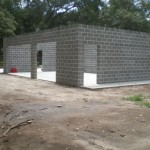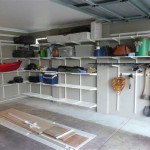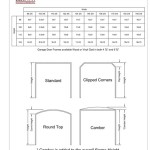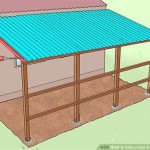Lawn Mower Garage Storage Ideas For The Homestead
Maintaining a homestead often necessitates the use of various tools and equipment, with the lawn mower frequently being an essential item. Proper storage of a lawn mower within a garage not only protects the equipment from the elements but also helps to maximize space and maintain an organized homestead environment. This article explores various lawn mower garage storage ideas suitable for homestead applications, focusing on solutions that prioritize functionality, durability, and accessibility.
The homestead garage often serves multiple purposes beyond vehicle storage. It may function as a workshop, storage area for gardening supplies, and general utility space. Therefore, effective lawn mower storage strategies must consider the garage's overall layout and the need for efficient space utilization. Choosing the right storage method can significantly impact the garage's usability and the longevity of the lawn mower itself.
Vertical Storage Solutions
One of the most effective approaches to lawn mower garage storage is vertical storage. This method leverages the often-underutilized vertical space within the garage, freeing up valuable floor area. Several options fall under the umbrella of vertical storage, each with its distinct advantages and considerations.
Wall-Mounted Racks and Lifts: Wall-mounted racks are designed to support the weight of a lawn mower, allowing it to be stored against the wall. These racks are typically constructed from heavy-duty steel and feature a mechanism for securely holding the mower in place. Installation usually involves attaching the rack to wall studs for maximum stability. This type of storage is particularly suitable for smaller, lightweight lawn mowers. For heavier models, a wall-mounted lift system might be preferable. These systems use a crank or pulley mechanism to raise and lower the mower, making it easier to manage heavier equipment. The lift system also helps to evenly distribute the weight, minimizing stress on the wall.
Overhead Storage Platforms: Overhead storage platforms provide another vertical storage option. These platforms are typically installed near the ceiling of the garage, creating a raised storage area. Lawn mowers can be lifted onto the platform using a ramp or a pulley system. This approach is ideal for garages with high ceilings and can accommodate larger, riding lawn mowers. However, it's crucial to ensure that the platform is securely anchored to the garage's structural supports and that the lifting mechanism is rated for the weight of the mower.
DIY Vertical Storage: For homesteaders inclined towards DIY projects, constructing custom vertical storage solutions can be a cost-effective option. This might involve building a simple wooden frame to hold the lawn mower upright or modifying existing shelving units to accommodate the mower's dimensions. When designing a DIY vertical storage system, it's important to consider the weight distribution, stability, and ease of access to the mower.
When implementing vertical storage solutions, it's essential to account for the mower's dimensions, weight, and ease of access. Properly securing the mower is crucial to prevent accidents and ensure the safety of individuals using the garage. Regularly inspecting the storage system for signs of wear and tear is also recommended.
Horizontal Storage Options
While vertical storage maximizes space, horizontal storage maintains accessibility and convenience. Several variations of horizontal storage are suitable for different garage layouts and mower types.
Dedicated Lawn Mower Storage Sheds: Constructing a small, dedicated storage shed within the garage provides a designated space for the lawn mower. This shed can be built from wood or metal and should be sized to comfortably accommodate the mower along with any associated accessories, such as fuel cans and trimmers. A shed offers protection from dust, debris, and potential impacts from other garage activities. Ventilation should be considered to prevent moisture buildup and potential corrosion of the mower.
Rolling Platforms and Dollies: Placing the lawn mower on a rolling platform or dolly allows for easy movement and repositioning within the garage. This is particularly useful for garages with limited space, as the mower can be easily moved out of the way when not in use. Ensure the platform or dolly is rated for the mower's weight and features sturdy wheels for smooth maneuverability. It is also beneficial to consider platforms with integrated braking systems to prevent unintended movement, especially on sloped garage floors.
Designated Floor Space: Designating a specific area on the garage floor for the lawn mower, while seemingly simple, can be an effective solution if space permits. This area should be kept clear of other items to prevent accidental damage to the mower. Consider using rubber mats or floor protectors to prevent scratches and dents to the garage floor. Implementing a visual boundary, such as painted lines or tape, can help to delineate the storage area and prevent encroachment from other stored items.
When considering horizontal storage, accessibility and ease of movement should be prioritized. The arrangement should minimize obstructions and allow for quick retrieval of the mower when needed. Regular cleaning of the storage area is also important to prevent the accumulation of dirt and debris.
Considerations for Specific Lawn Mower Types
The optimal storage solution will vary depending on the type of lawn mower being stored. Push mowers, riding mowers, and robotic mowers each present unique storage challenges and opportunities.
Push Mowers: Push mowers are generally smaller and lighter than riding mowers, making them well-suited for vertical storage solutions. Wall-mounted racks or hooks are often sufficient for storing push mowers. Folding push mowers can be further compacted for storage, reducing the overall footprint.
Riding Mowers: Riding mowers require more substantial storage solutions due to their size and weight. Overhead storage platforms or dedicated storage sheds within the garage are common options. When using overhead platforms, ensuring the lifting mechanism is appropriately rated and regularly inspected is essential. For storage sheds, adequate ventilation is crucial to prevent moisture buildup.
Robotic Mowers: Robotic mowers typically require a charging station, which should be located in a protected area. A small, enclosed space within the garage can serve as a suitable storage and charging area for robotic mowers. Protecting the charging station from the elements and potential impacts is important. Consider installing a small shelf or cabinet to store the mower's accessories and instruction manual.
Beyond the mower type, there are other factors to consider for all mower types. Proper fuel storage practices should be followed to prevent fire hazards. Disconnecting the spark plug or battery is a good safety measure for long-term storage. Regularly cleaning the mower deck and blades before storage can prevent corrosion and maintain the mower's performance.
In conclusion, effective lawn mower garage storage is crucial for maintaining an organized and functional homestead. By carefully considering the available space, mower type, and storage needs, homesteaders can implement solutions that maximize space utilization, protect their equipment, and enhance the overall efficiency of their garage.

Garage Storage Ideas For Lawn Mower

Diy Garage Storage For All Your Lawn Equipment Gas Or Battery Powered

Lawnmower Snowblower Storage Cabinet

How To Properly Maintain And Your Lawn Garden Tools Equipment For The Winter Homestead Structures

Lawn Mower Storage Garage On

Diy Lawn Mower Storage Caddy Lpc Survival

9 Real Life Shed Organization Ideas The Seasonal Homestead

17 Creative Lawn Mower Storage Ideas To Diy Or Buy Outdoor Happens Homestead

9 Real Life Shed Organization Ideas The Seasonal Homestead

Lawn Mower Storage Garage On
Related Posts








